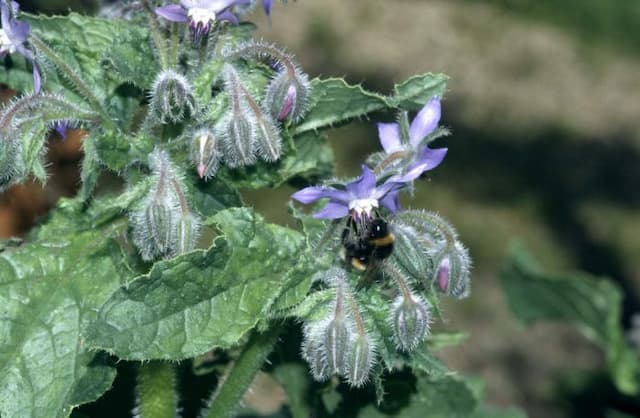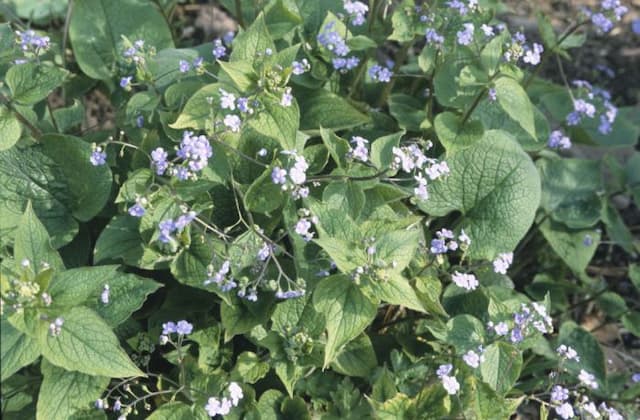Echium amoenum 'Red Feathers' Echium amoenum

ABOUT
E. amoenum is an evergreen biennial or short-lived perennial producing a mounded rosette of bristly, narrow, dark green leaves. From late spring until the frost, upright stems 20cm-40cm tall support spires of bell-shaped flowers, red at first, fading to pink or purple
About this plant
 Names
NamesFamily
Boraginaceae
Synonyms
Red Feathers, Persian Bugloss, Blueweed, Viper's Bugloss
Common names
Anchusa amoena, Echium amoenum var. intermedius, Echium amoenum var. ibericum, Echium asperrimum, Echium fastuosum, Echium glomeratum, Echium lugdunense, Echium rubrum, Echium violaceum.
 Characteristics
CharacteristicsLife cycle
Perennials
Foliage type
Deciduous
Color of leaves
Green
Flower color
Red
Height
1-2 feet (30-60 cm)
Spread
1-2 feet (30-60 cm)
Plant type
Herb
Hardiness zones
7
Native area
Iran
Benefits
 General Benefits
General Benefits- Attracts Pollinators: Echium amoenum, commonly known as Red Feathers, is a plant that produces nectar-rich flowers attracting bees, butterflies, and other beneficial pollinators to the garden.
- Aesthetic Appeal: With its striking red or blue flowers, Red Feathers can provide a vibrant splash of color, enhancing the visual interest of any garden or landscape setting.
- Drought Tolerance: Red Feathers is known for its ability to withstand dry conditions once established, making it a suitable choice for xeriscaping and water-efficient gardens.
- Ease of Care: This plant is generally low-maintenance, requiring minimal care once planted, which can be a boon for both novice and experienced gardeners alike.
- Resilience to Pests: Red Feathers is relatively resistant to many common garden pests, reducing the need for chemical pest control methods.
- Adaptability: The plant thrives in a variety of soil types and climates, making it adaptable to various garden environments.
- Seasonal Interest: It has a lengthy blooming season that extends from late spring through to fall, providing long-lasting interest in the garden.
- Support for Biodiversity: By providing food for pollinators, Red Feathers contributes to the biodiversity and ecological health of the garden ecosystem.
 Medical Properties
Medical Properties- Anti-inflammatory: Echium amoenum contains components that help reduce inflammation in the body.
- Antioxidant: The plant has antioxidant properties which can protect cells from damage caused by free radicals.
- Anxiolytic: Echium amoenum is used for its anxiolytic effects to reduce anxiety and stress levels.
- Antidepressant: It has been used to alleviate symptoms of depression in traditional medicine.
- Immunomodulatory: The plant may have effects on the immune system, potentially modulating immune responses.
- Analgesic: It has been employed to relieve pain due to its analgesic properties.
- Antitussive: Echium amoenum can be used to relieve coughs.
- Cardioprotective: There is potential use for Echium amoenum in protecting heart health, though more research is needed.
- Hepatoprotective: The plant may offer some protection to the liver against certain toxins.
- Antimicrobial: Echium amoenum contains substances with antimicrobial activity that can inhibit the growth of certain pathogens.
- Anticonvulsant: It is suggested to have some anticonvulsant properties which may help in the management of seizures.
 Air-purifying Qualities
Air-purifying QualitiesThis plant is not specifically known for air purifying qualities.
 Other Uses
Other Uses- Echium amoenum, commonly known as Red Feathers, can be used as a natural dye, providing a range of hues from yellow to green depending on the mordant used, for textile and craft applications.
- In some cultures, Red Feathers is added to compost piles as it is believed to accelerate the composting process and add valuable nutrients to the compost.
- The flowers of Red Feathers are sometimes incorporated into potpourris for their color and subtle fragrance, which adds an aesthetic touch to the mix.
- Gardeners may utilize the plant's ability to attract pollinators like bees and butterflies, enhancing the pollination of nearby plants in gardens and orchards.
- The dense and spike-like growth of Red Feathers can be used in garden landscaping as a structural plant, adding vertical interest to flower beds and borders.
- Echium amoenum is occasionally used in companion planting to help deter certain pests from more vulnerable crops or ornamental plants.
- Floral artists use Red Feathers in fresh and dried arrangements, where their striking and long-lasting blooms add height and a touch of elegance.
- Red Feathers can be used to create a natural barrier or hedge in gardens due to its bushy growth habit and the height it can achieve.
- The stems of Red Feathers, once dried, may be used in basketry or as part of woven natural fences for both their strength and aesthetic appeal.
- In some regional cuisines, the flowers of Red Feathers are used to infuse syrups, jams, or vinegars with its delicate flavor and color.
Interesting Facts
 Feng Shui
Feng ShuiThe Red Feathers is not used in Feng Shui practice.
 Zodiac Sign Compitability
Zodiac Sign CompitabilityThe Red Feathers is not used in astrology practice.
 Plant Symbolism
Plant Symbolism- Resilience: Echium amoenum, commonly known as Red Feathers or Persian Borage, is known for its hardy nature and ability to adapt to different environments, symbolizing the capacity to endure and thrive through challenges.
- Health and healing: In traditional medicine, this plant has been used for its therapeutic properties, making it a symbol of health and the ability to heal physical and emotional ailments.
- Love and affection: The vibrant red flowers of Red Feathers can represent passionate love and strong affection, often associated with the warm feelings evoked by its rich color.
- Peace and tranquility: In some cultures, Echium amoenum is used in tea blends for its calming effects, which makes it a symbol of peace and relaxation, helping to ease the mind and spirit.
 Water
WaterRed Feathers should be watered moderately. During the growing season, Red Feathers typically requires water every 5 to 7 days, depending on the climate and soil conditions. It is important to check the soil moisture before watering; the top inch of soil should be dry to the touch. Water the plant with about 16 ounces of water ensuring it reaches the root zone without oversaturating the soil, as this plant prefers well-drained conditions. During winter months, water less frequently, allowing the soil to dry out more between watering.
 Light
LightRed Feathers thrives best in full sun to partial shade conditions. An ideal location would provide direct sunlight for at least 6 hours each day, which encourages healthy blooming and growth. However, in particularly hot climates, some afternoon shade can help protect the plant from excessive heat.
 Temperature
TemperatureRed Feathers grows best in temperatures ranging from 60 to 75 degrees Fahrenheit. It can tolerate temperatures as low as 30 degrees Fahrenheit and as high as 90 degrees Fahrenheit, but prolonged exposure to extremes can be harmful. The optimal temperature range allows for robust growth and flowering.
 Pruning
PruningPruning Red Feathers helps to maintain its shape and encourage bushier growth. It is best pruned after the flowering season ends, which is typically late summer. Pruning involves cutting back spent flower stalks and trimming any overgrown or dead branches. Pruning once a year is sufficient for keeping Red Feathers healthy.
 Cleaning
CleaningAs needed
 Soil
SoilThe Red Feathers plant prefers a well-draining soil mix with a slightly acidic to neutral pH of around 6.0 to 7.5. A mix of garden soil, compost, and perlite or sand to improve drainage is ideal for Echium amoenum.
 Repotting
RepottingRed Feathers plants should be repotted every two to three years or when they become root-bound. Repotting allows for the refreshment of the soil and room for further growth.
 Humidity & Misting
Humidity & MistingRed Feathers plants do well in average humidity levels typical of most homes, which is around 40-60%. They don't require high humidity to thrive.
 Suitable locations
Suitable locationsIndoor
Ensure bright light, well-draining soil, and room temperature.
Outdoor
Plant in full sun, well-draining soil, and protect from frost.
Hardiness zone
4-8 USDA
 Life cycle
Life cycleEchium amoenum, commonly referred to as Red Feathers or Persian Borage, begins its life as a seed, which germinates in the spring when temperatures are mild and moisture is adequate. The seedling then develops a rosette of hairy, lance-shaped leaves at ground level, before sending up a flowering stalk in its second year after a period of cold stratification. In the flowering stage, typically occurring in late spring or early summer, the plant produces vibrant scarlet to purplish-red flowers, which are tubular and grouped in a spike formation, attracting bees and other pollinators. After pollination, the flowers develop into small nutlet fruits by late summer, which contain seeds for the next generation. During the fruiting stage, the plant’s foliage starts to wither and the entire plant eventually dies, being a biennial. The seeds are then dispersed by wind, water, or animals, lying dormant until conditions are right for the next cycle of germination.
 Propogation
PropogationPropogation time
Spring to early summer
The Persian Borage, or Echium amoenum, is most commonly propagated by seed. Propagation is best carried out in spring, when the risk of frost has passed and the soil has begun to warm up, providing an ideal environment for seed germination. The process involves sowing the seeds thinly onto well-draining soil and lightly covering them with a fine layer of soil or compost. It is important to keep the soil moist but not waterlogged, and the seeds should ideally be placed in a sunny location to facilitate germination. Once the seedlings have developed enough to handle, generally when they have their first set of true leaves, they can be thinned out and transplanted to their final positions, ensuring a spacing of about 12 inches (approximately 30 centimeters) apart to allow adequate room for growth.








